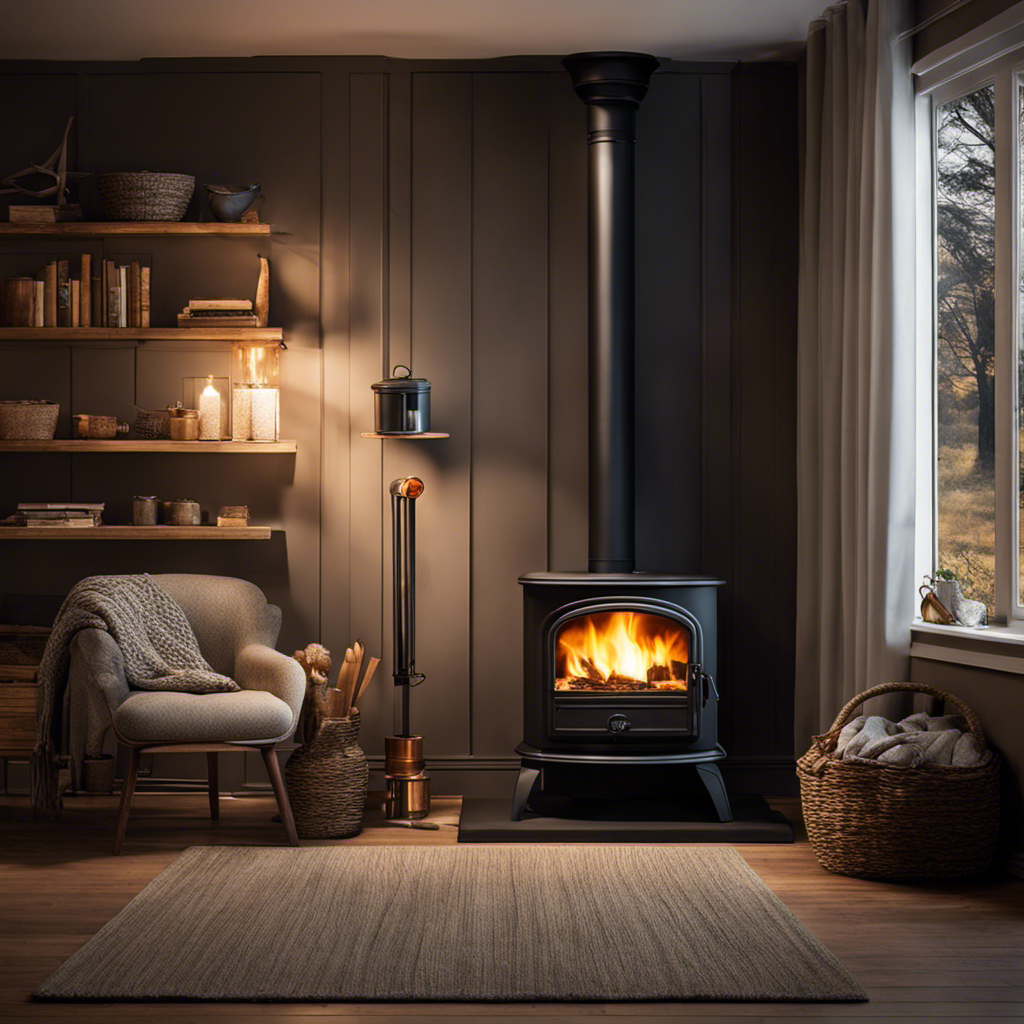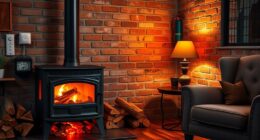I am here to present the perfect solution for your concerns with wood stove pipes. Bid farewell to smoky rooms and ineffective heating!
In just a few simple steps, I’ll guide you through the process of replacing your wood stove pipe with ease. With my expert tips and tricks, you’ll have proper ventilation and improved performance in no time.
So grab your tools and let’s get started on this transformative journey to a better wood stove experience.
Key Takeaways
- Proper ventilation is crucial for maintaining the efficiency and safety of a wood stove.
- Inadequate ventilation can lead to excessive smoke in the home, soot accumulation, and a strong smoky odor.
- Rust damage on the wood stove pipe’s surface should be evaluated, as it can weaken the pipe and cause leaks or structural failure.
- When replacing the wood stove pipe, choose the correct size pipe, wear protective gear, and follow safety precautions.
Understanding the Importance of Proper Ventilation
I can’t underestimate the importance of proper ventilation when it comes to replacing wood stove pipe. Ventilation plays a crucial role in maintaining the efficiency and safety of your wood stove.
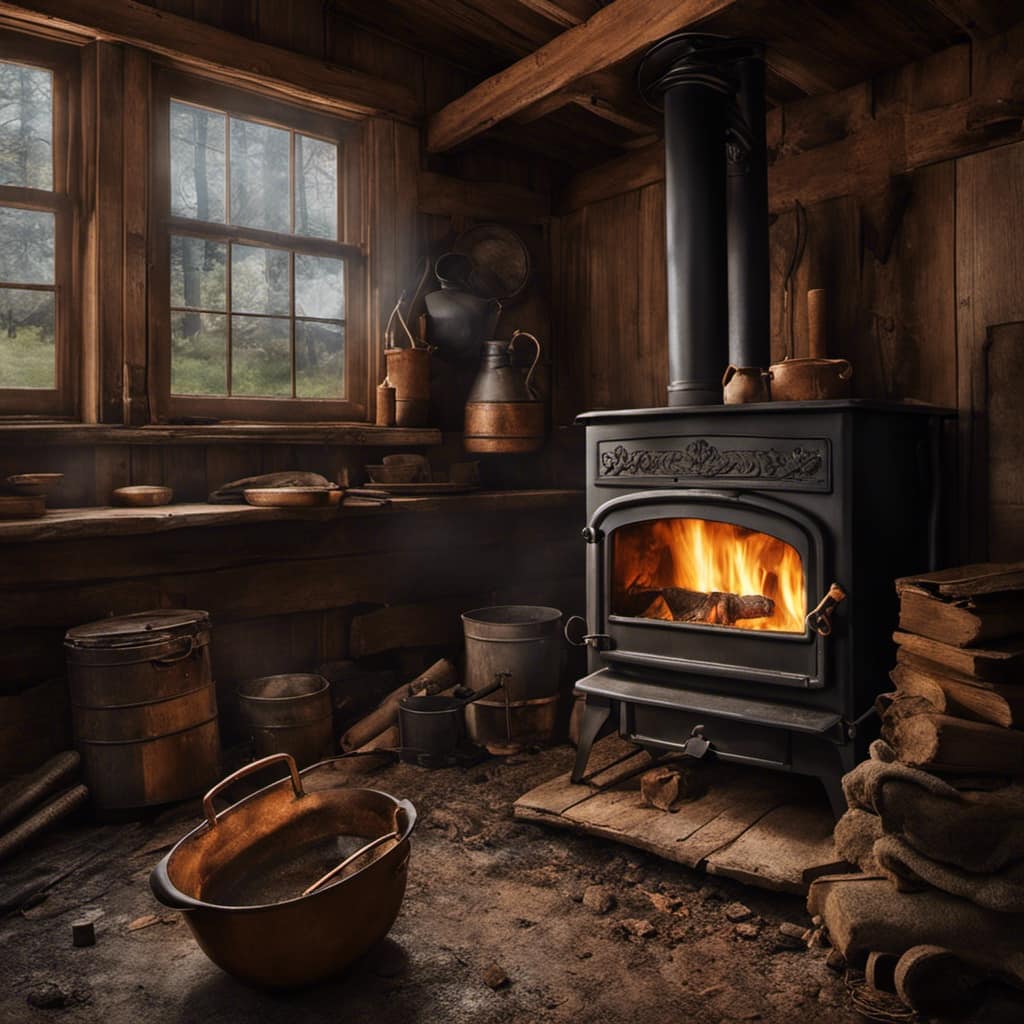
Regular maintenance is essential to ensure proper airflow and prevent potential hazards. One of the key signs of inadequate ventilation is the presence of excessive smoke in your home. If you notice an increase in soot accumulation or a strong smoky odor, it’s a clear indication that your wood stove pipe needs attention.
Another sign to watch out for is the presence of condensation or moisture on the interior walls of your chimney. This can lead to the formation of creosote, a highly flammable substance that can cause chimney fires.
Assessing the Condition of Your Current Wood Stove Pipe
After inspecting it closely, I believe my current stove pipe may need to be replaced due to its damaged condition.
The first step in assessing the condition of the pipe is evaluating rust damage. Look for any signs of corrosion or rust spots on the surface of the pipe. Rust can weaken the pipe and lead to leaks or even structural failure.
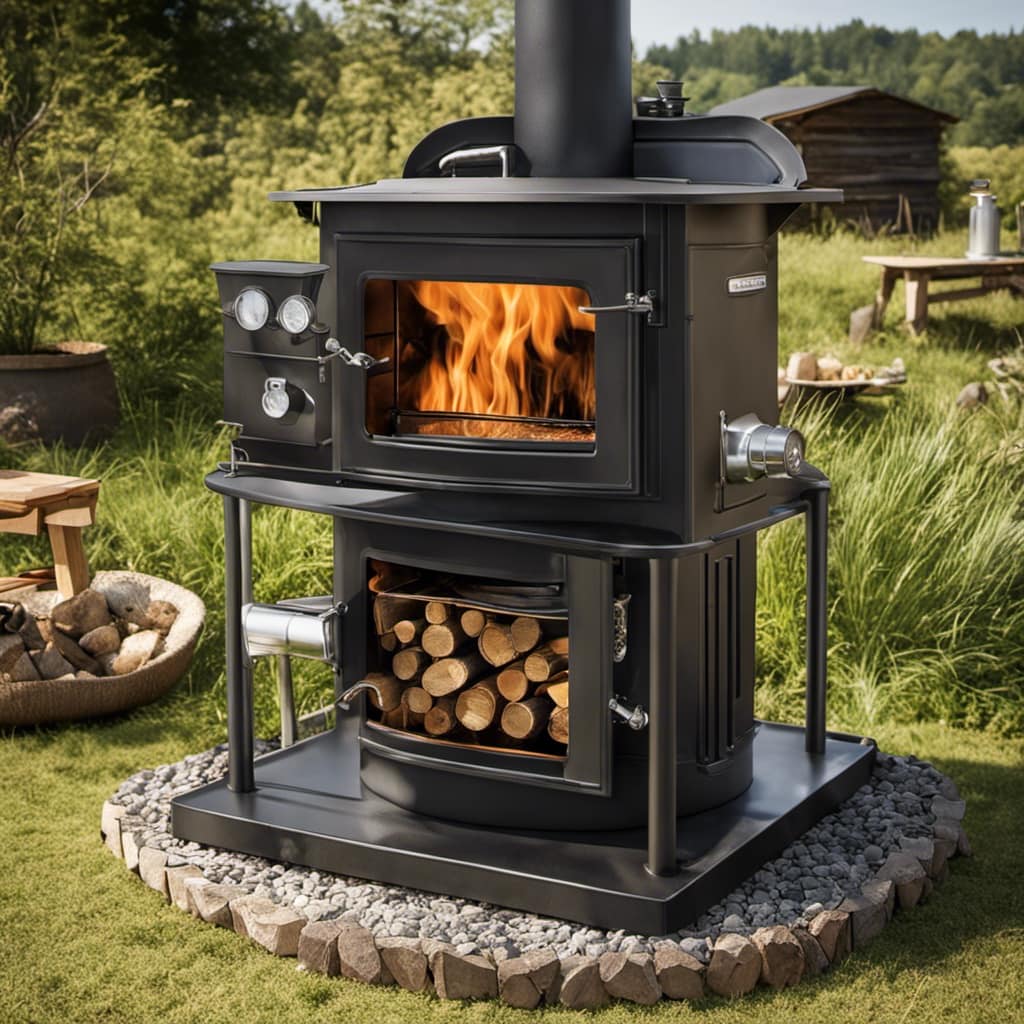
Next, measure the diameter of the pipe to ensure you get the proper size for replacement. Use a tape measure or caliper to accurately measure the inside diameter of the pipe.
Gathering the Necessary Tools and Materials
To complete this task, I’ll need a tape measure, caliper, and the appropriate replacement materials. Choosing the right size pipe is crucial for a successful wood stove pipe replacement. Measure the diameter of the existing pipe to ensure you purchase the correct size.
Safety precautions during installation are essential to prevent accidents and ensure a safe working environment. Always wear protective gloves and goggles to protect yourself from sharp edges and debris. Make sure the wood stove is completely cooled down before starting the replacement process.
Use caution when handling and cutting the new pipe to avoid injuries. Additionally, be mindful of any electrical wires or flammable materials nearby. Following these safety precautions will help ensure a smooth and secure wood stove pipe replacement.
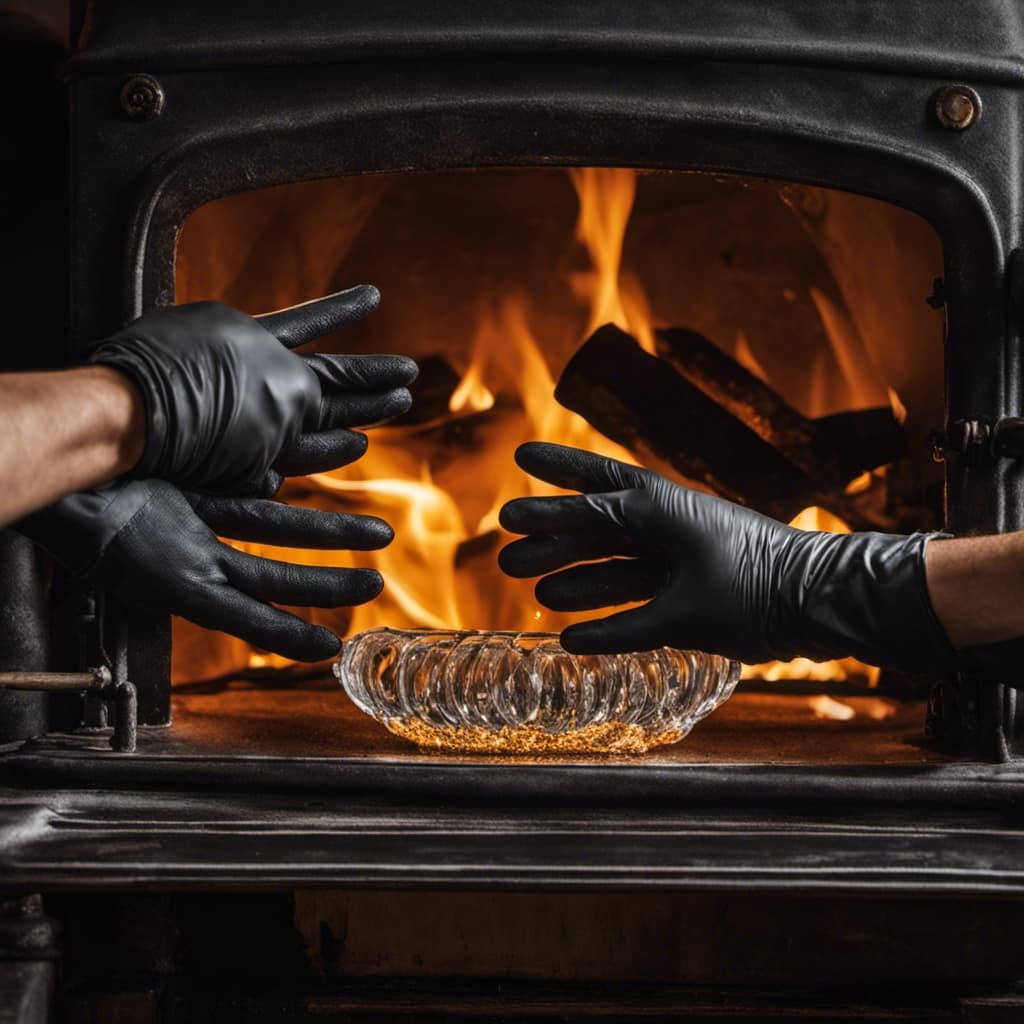
Step-by-Step Guide to Removing the Old Wood Stove Pipe
Removing the old pipe requires carefully loosening the clamps and gently maneuvering the sections apart. Before starting, it’s important to take safety precautions such as wearing gloves and eye protection. Here is a step-by-step guide to help you remove the old wood stove pipe:
-
Inspect the pipe for any signs of rust or damage. If there’s rust, use a wire brush to remove it before proceeding.
-
Loosen the clamps that connect the sections of the pipe together. This can usually be done by turning the screws counterclockwise.
-
Gently maneuver the sections apart, being careful not to force them. If the pipe is stuck, you can use a rubber mallet to tap it lightly and help loosen it.
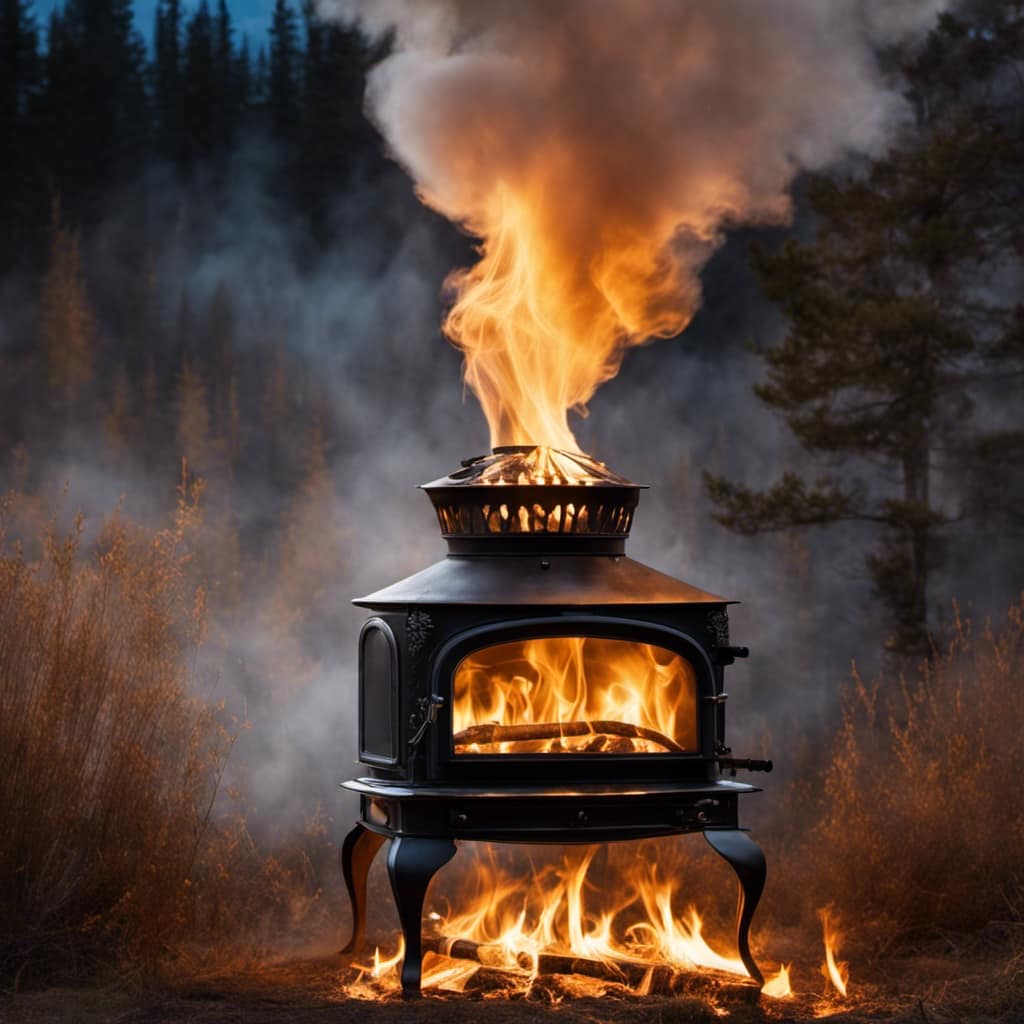
Installing the New Wood Stove Pipe With Precision
I carefully assemble the new pipe sections, ensuring a precise fit for optimal performance.
When it comes to installing a wood stove pipe, there are several techniques to keep in mind for a successful installation.
First, it’s crucial to choose the right size and type of pipe for your specific stove and chimney setup. Make sure to follow the manufacturer’s instructions for proper installation.
Before connecting the pipe sections, clean the ends thoroughly and remove any debris. A tight seal is essential to prevent smoke leakage, so use high-temperature silicone sealant on each joint.
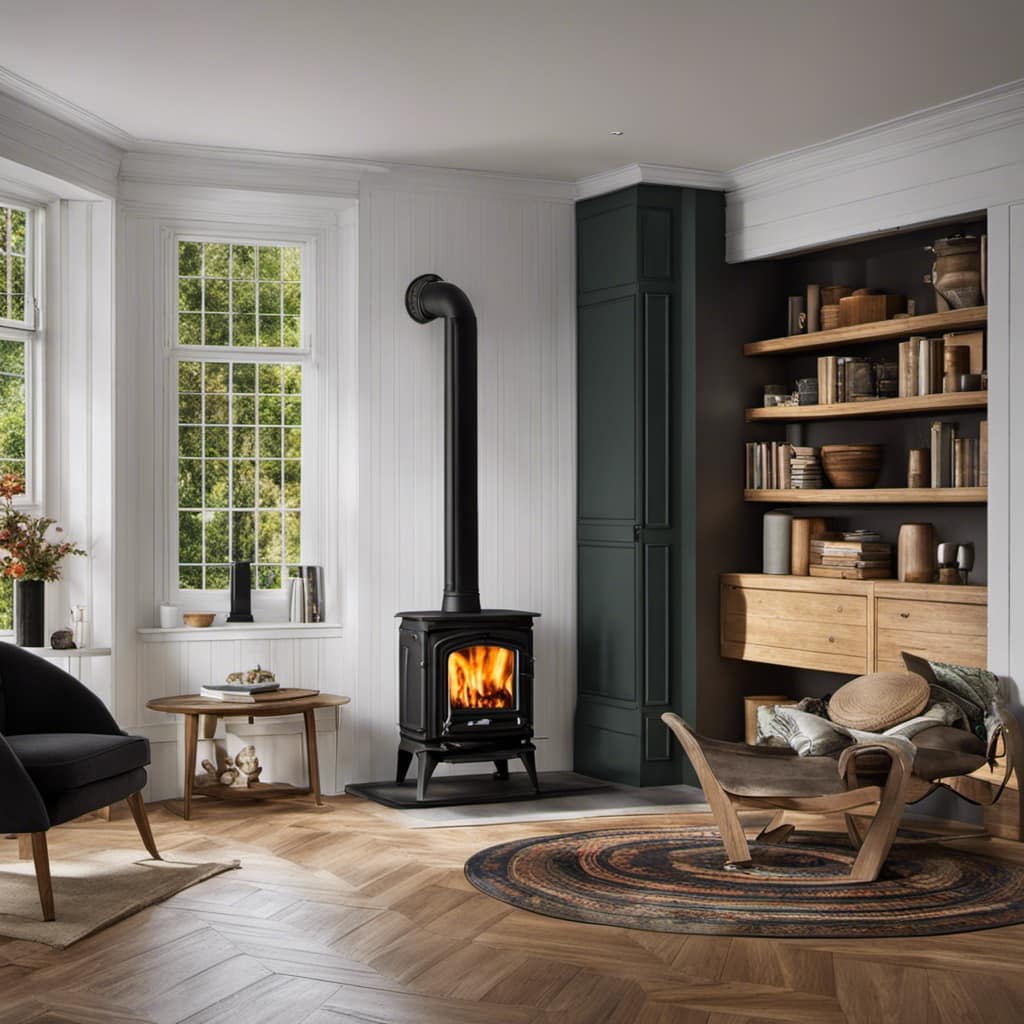
Additionally, regularly inspect and clean the pipe to prevent creosote buildup, which can lead to chimney fires.
Frequently Asked Questions
Can I Use My Existing Wood Stove Pipe With a New Wood Stove?
Yes, you can use your existing wood stove pipe with a new wood stove. However, it’s recommended to upgrade the pipe for better compatibility and improved performance. Upgrading offers benefits such as increased efficiency and reduced risk of chimney fires.
How Often Should I Clean My Wood Stove Pipe?
I clean my wood stove pipe at least once a year to prevent buildup and maintain optimal performance. Signs of a dirty pipe include reduced draft, increased smoke, and a strong odor. Regular cleaning is essential for safety and efficiency.
Can I Install a Wood Stove Pipe Without Professional Help?
Installing wood stove pipe can be done without professional help, but it requires careful planning and knowledge of local building codes. DIY wood stove pipe installation involves measuring, cutting, and connecting the sections, ensuring proper ventilation and clearances for safety.
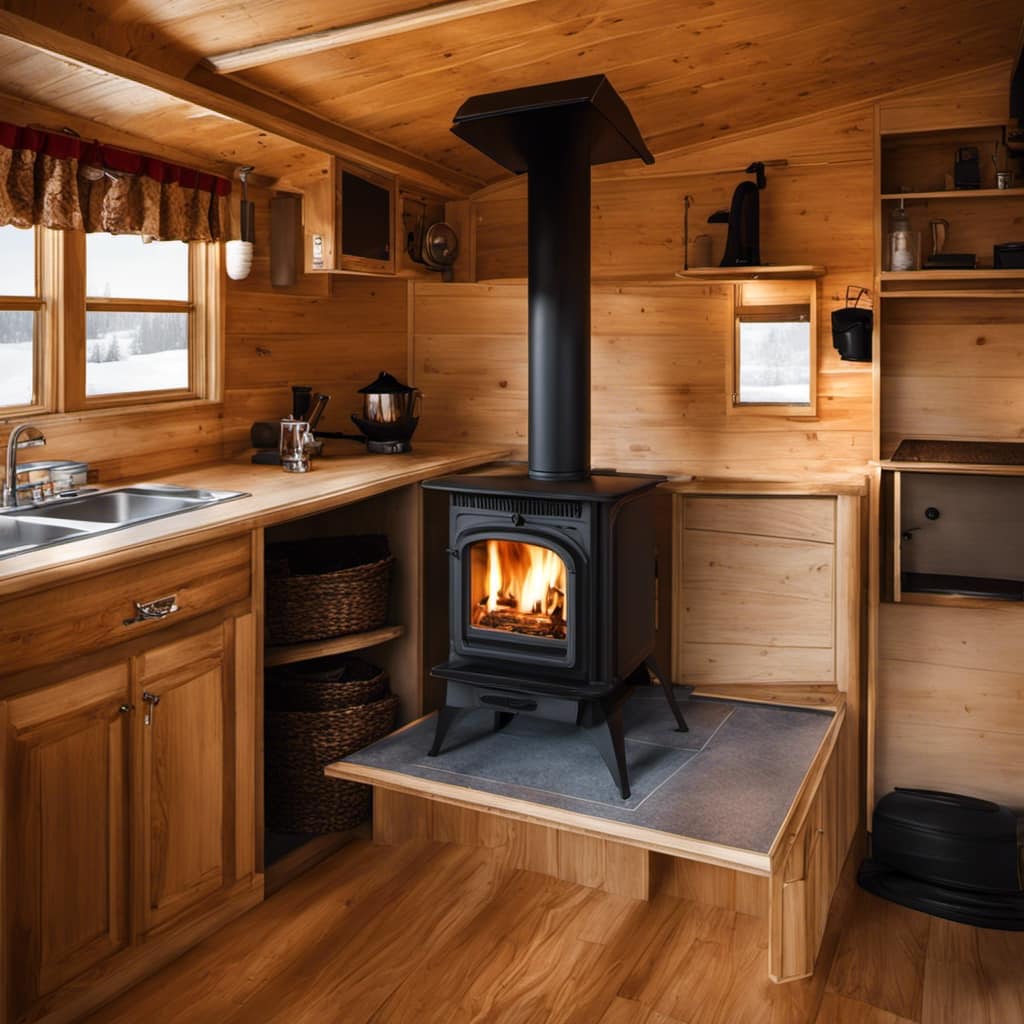
What Is the Lifespan of a Wood Stove Pipe?
The lifespan of a wood stove pipe depends on various factors such as the quality of the pipe, proper maintenance, and usage. Regular inspection and cleaning can help extend its lifespan and ensure safe operation.
Are There Any Regulations or Building Codes to Consider When Replacing a Wood Stove Pipe?
When replacing a wood stove pipe, it’s crucial to adhere to building code regulations and safety standards. These guidelines ensure the proper installation and reduce the risk of fire hazards. Safety should always be a top priority.
Conclusion
So there you’ve it, a step-by-step guide on how to replace your wood stove pipe. With the right knowledge, tools, and materials, you can ensure proper ventilation and optimize the performance of your wood stove.
Remember, it’s important to assess the condition of your current pipe and take the necessary precautions to ensure a safe and efficient installation.
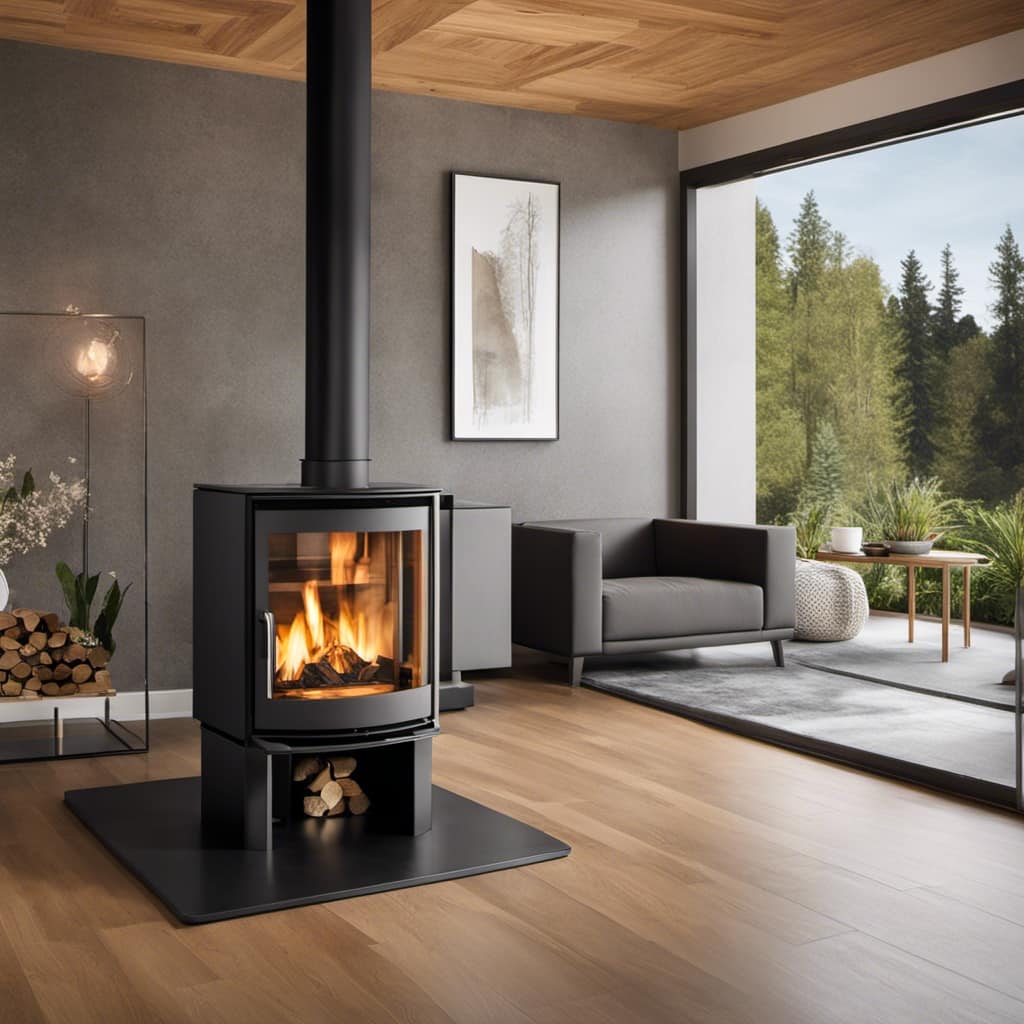
Now go forth and conquer the world of wood stove pipe replacement, because who doesn’t love a good DIY project?
Growing up surrounded by the vast beauty of nature, Sierra was always drawn to the call of the wild. While others sought the comfort of the familiar, she ventured out, embracing the unpredictable and finding stories in the heartbeat of nature.
At the epicenter of every remarkable venture lies a dynamic team—a fusion of diverse talents, visions, and passions. The essence of Best Small Wood Stoves is crafted and refined by such a trio: Sierra, Logan, and Terra. Their collective expertise has transformed the platform into a leading authority on small wood stoves, radiating warmth and knowledge in equal measure.







